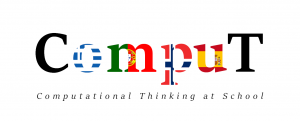Αρχική » 1. algorithms
Αρχείο κατηγορίας 1. algorithms
Dimensions of Computational Thinking in COMPUT project
When we started working on the project Computational Thinking at School, our plan was to study the following dimensions of Computational Thinking creative problem solving algorithmic approach to problem-solving problem solution transfer logical reasoning abstraction generalization representation and organization of data systemic thinking evaluation social impact of computation While working on the dimensions, it proved […]
BBC Algorithms test
Visit BBc site to take the Algorithms test More tests on Computational Thinking by BBC
BBC Representing an algorithm: Pseudocode and flowcharts
There are two main ways that algorithms can be represented – pseudocode and flowcharts. Representing an algorithm: Pseudocode Most programs are developed using programming languages. These languages have specific syntax that must be used so that the program will run properly. Pseudocode is not a programming language, it is a simple way of describing a set of instructions that does not have to use specific syntax. […]
BBC Algorithms
An algorithm is a plan, a set of step-by-step instructions to resolve a problem. In an algorithm, each instruction is identified and the order in which they should be carried out is planned. What is an algorithm? Algorithms are one of the four cornerstones of Computer Science. An algorithm is a plan, a set of step-by-step […]




